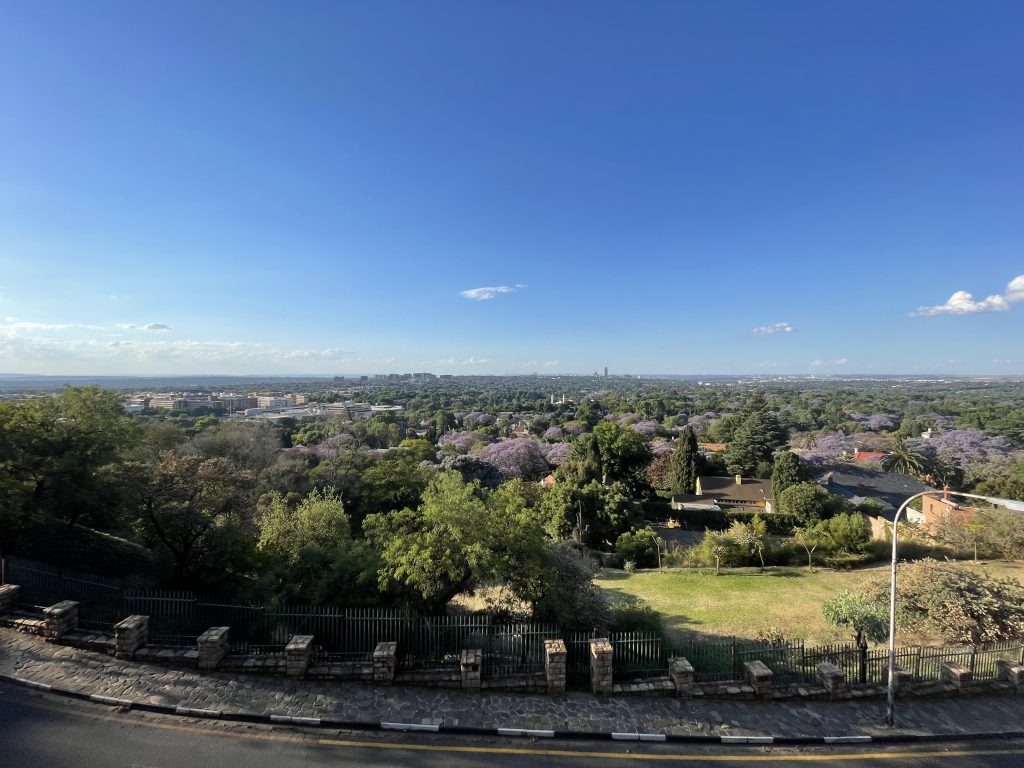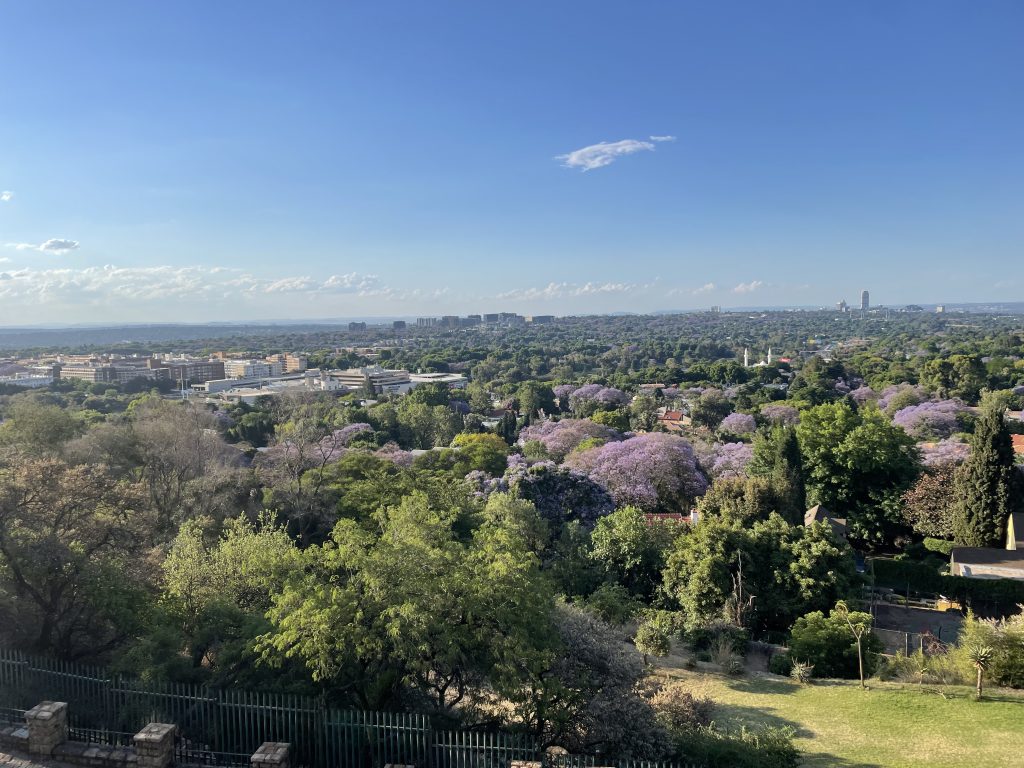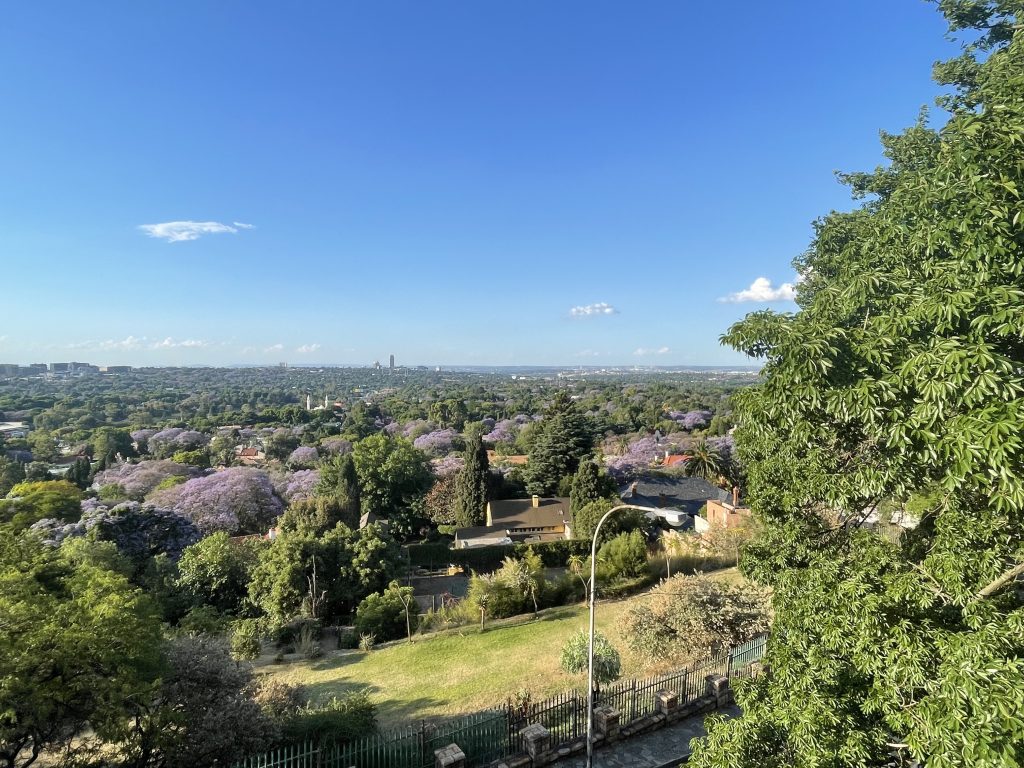In Jozi – otherwise Johannesburg to the uninitiated? Take a drive to the Munro Drive, up the the meandering road from Houghton Estates to Upper Houghton. Stop at the top and enjoy the green blanket covering the city. Yes, this city with a rich history of gold mining and urban development has undergone a remarkable transformation, one that has not only redefined its identity but also set a global benchmark for urban sustainability. Jozi, the bustling economic hub known for its iconic skyline, is on a mission to reshape its image, positioning itself as the world’s largest man-made forest, challenging preconceived notions of concrete jungles. This audacious undertaking has captured the world’s attention, as Joburg aims to become a living testament to the power of urban greenery and conservation.
A Journey Back to Nature
Jozi’s commitment to becoming a man-made forest is a testament to its commitment to sustainability and environmental conservation. This initiative didn’t happen overnight; it’s the result of a conscious and forward-thinking effort to reclaim its natural heritage.
The ambitious reforestation project began several decades ago, as Johannesburg’s leaders recognised the urgent need to combat climate change and combat air pollution. It was decided that the city should be reimagined, evolving from a concrete sprawl into a green haven. The city has since planted over six million trees across its landscape, turning vast expanses of asphalt and concrete into lush, vibrant green spaces. Today, more than a third of Johannesburg’s 1 645 square kilometres is covered with greenery.

The Urban Forest: A new identity
The transformation of Johannesburg into an urban forest has not only reshaped its physical landscape but also redefined its identity. So my question is why the city’s brand architects are not using this effort in its positioning? The city’s rebranding as an urban forest will open up new possibilities for tourism, business and quality of life. It will paint a vivid picture of a metropolis that values the environment and well-being of its inhabitants, and that embraces the climate change challenges of the 21st century with creativity and innovation.
A shift towards sustainable living and eco-friendly infrastructure is evident throughout Johannesburg. Parks, botanical gardens, and tree-lined streets are seamlessly integrated into the urban fabric. Visitors and residents can escape the hustle and bustle of the city with a short walk to lush green oases that provide a breath of fresh air and tranquility. The city’s streets are adorned with green canopies, providing shade and comfort even during the hottest months.

Economic and Social Impacts
The transformation of Jozi into a man-made forest isn’t just a symbolic gesture; it has substantial economic and social benefits. The city’s commitment to environmental sustainability has attracted a growing number of eco-conscious businesses, innovative startups, and environmentally-minded entrepreneurs.
Tourism has also seen a significant boost. Visitors from around the world are intrigued by the idea of experiencing a metropolis that has turned into a forest. Ecotourism has become a significant source of revenue for the city, with nature walks (think of The Wilds down the road on Joe Slovo Avenue), bird-watching and outdoor activities becoming increasingly popular among tourists.
Furthermore, the green transformation has had a profound impact on the well-being of Johannesburg’s residents. Improved air quality, increased access to green spaces, and a greater focus on outdoor activities have led to healthier, happier citizens. The city’s commitment to sustainability is also seen in its educational programs, inspiring the younger generation to become environmental stewards.

Challenges and Future Aspirations
While Jozi’s journey towards becoming the world’s largest man-made forest is a remarkable achievement, it has not been without its challenges. The city must continually adapt and find new ways to maintain and expand its green cover, especially as it continues to grow and develop.
Water conservation and responsible land use are top priorities. Drought-resistant tree species and innovative irrigation techniques are continuously being explored to ensure the city’s green assets thrive in a water-scarce region. Sustainable urban planning is another crucial aspect, ensuring that green spaces are integrated seamlessly into the city’s fabric while addressing housing and infrastructure needs.
Jozi’s aspiration to be recognised as the world’s biggest man-made forest is not just a tagline; it’s a statement of commitment to a greener, more sustainable future. The city’s journey is a source of inspiration for other urban centres worldwide, encouraging them to embark on their own green revolutions.

As Jozi redefines its identity, positioning itself as the world’s largest man-made forest, it is not merely a branding exercise but a testament to the power of human determination and environmental consciousness. This ambitious transformation represents a step towards a sustainable, prosperous, and inclusive future for the city, embodying the belief that even in the heart of a bustling metropolis, nature can be nurtured, and the concrete jungle can truly become a green paradise. the city’s audacious journey serves as a beacon of hope for all urban centres seeking to coexist harmoniously with nature in the 21st century.
In conclusion, Jozi’s journey to brand itself as the world’s biggest man-made forest is not just a matter of aesthetics or marketing; it’s a vital step towards securing a sustainable and prosperous future for the city and its inhabitants. By embracing this bold transformation, the city may send a powerful message to the world that urban centres can coexist harmoniously with nature. This rebranding could be a commitment to cleaner air, better quality of life and an eco-conscious identity, which may attract innovative businesses and tourists seeking eco-friendly experiences. It will foster a sense of pride and responsibility among residents, inspiring the next generation to become environmental stewards. This ambitious undertaking will showcase the potential of cities to address climate change, reduce pollution and foster a sense of well-being, ultimately redefining the very essence of what a modern urban environment can be. Jozi’s bold journey may exemplify that a harmonious blend of urban living and natural beauty is not just a dream but a tangible reality for the future.
Tujenge Afrika Pamoja! Let’s Build Africa Together.
Enjoy your weekend.
Saul Molobi (FCIM)
Group Chairman and Chief Executive Officer
Brandhill Africa™
Tel: +27 11 483 1019
Mobile: +27 83 635 7773
eMail: saul.molobi@brandhillafrica.com
Website: www.brandhillafrica.com
Social Media: Twitter / Instagram / LinkedIn / Facebook / YouTube / Jambo Africa Online / WhatsApp Group / 101.9 Chai FM

